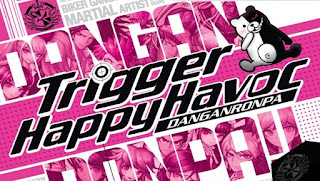Nintendo - 2001 - Gamecube
Man Luigi's Mansion is a weird game. On paper, this game shouldn't even be good. Luigi explores a haunted mansion and vacuums ghosts? It's a type of game that's really easy to make wrong or design in a way that isn't fun for the player. It's really the type of game that only a developer like Nintendo could make
This was my first time playing Luigi's mansion since it launched back in 2001 which is fifteen years now. Crazy. Man I had forgotten how short this game is. A friend and I sat down to play through it one afternoon and we finished it in one sitting. If you don't dawdle around too much, you can finish this game in about 5 hours. Which is fine but unusually short for other Nintendo games of this era. The game still holds up pretty well, especially graphically considering the game is 15 years old now. The relative small size and scope of the mansion allowed the artists, modelers and animators to pour in a lot of detail into each of the rooms of the mansion which is still impressive today, especially considering this was a launch title.
Just about every encounter with a ghost boils down to trying to expose their weakness so that they can be vacuumed into Luigi's ghost capturing machine. Even 15 years later, this still feels like a unique idea. The closest elements in common with any other game are the light use of puzzle solving elements when trying to figure out how to expose the ghost's weakness. Even though the game still feels fresh it isn't without faults. I wouldn't criticize it for being too short, but I will criticize it for obvious attempts to pad out its length. Near the end of the game, Luigi is forced to trek back and forth from the roof of the mansion to the basement which takes roughly 5 minutes one way and there isn't anything new or interesting presented to you along the way. Now as an adult I can recognize when a game is stretching for time and I'm not sure why developers feel this is necessary. To me, artificially stretching a game's length in a boring or repetitive way is always way more egregious of a sin than just actually being short
Summary
Luigi's Mansion is a short but fun foray into a haunted house that's more about the atmosphere and elements of scariness than actually being scary, which I can appreciate. I've yet to play the Luigi's Mansion: Dark Moon which is a 3DS exclusive sequel released in 2013 as part of Nintendo's "Year of Luigi" promotional event. I've heard good things about this game and I may need to check it out soon. As the popular internet saying goes: "The Year of Luigi never ends"






































